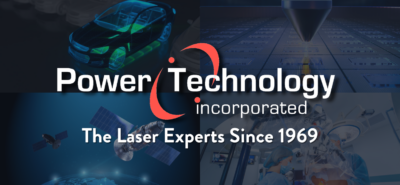Mastering the Heat: Advanced Applications of Lasers in High-Temperature Environments
Power Technology, Inc.2025-04-15T10:33:34-05:00Mastering the Heat: Advanced Applications of Lasers in High-Temperature Environments
High-temperature lasers represent one of the most rapidly evolving segments of laser technology, offering unprecedented capabilities for industries that operate under extreme conditions. These specialized laser systems have transformed industrial processes, scientific research, and field operations in environments where conventional lasers would fail. The integration of advanced thermal management, specialized materials, and innovative design enables lasers to function reliably at temperatures previously considered prohibitive, opening new frontiers for laser applications in some of the most demanding settings on Earth and beyond.
Understanding the Challenges of High-Temperature Laser Operation
Operating lasers in high-temperature environments presents complex challenges conventional laser systems simply cannot overcome. Traditional lasers typically operate within strict temperature ranges, experiencing performance degradation and potential failure when ambient temperatures exceed 50–85°C. This limitation stems from thermal expansion of optical components, wavelength drift, decreased quantum efficiency, and accelerated semiconductor material degradation. Elevated temperatures cause significant shifts in wavelength output, reducing precision in applications requiring tight spectral control. Excessive heat can alter the properties of gain mediums and damage optical alignments, reducing beam quality and operational lifetimes.
Challenges extend beyond lasers to associated electronics and power systems. Control circuitry, drivers, and power supplies all face reliability issues at high temperatures, with standard components typically rated for lower maximum temperatures. Thermal cycling—repeated heating and cooling—adds stress through material expansion and contraction, compromising optical alignment, solder joints, and mechanical components. These factors historically limited laser deployment in high-temperature applications, forcing reliance on less precise or efficient technologies.
Moisture and particulate contamination further complicate real-world high-temperature environments. Industrial settings combine heat with dust, water vapor, or corrosive elements that penetrate conventional laser housings, degrading optical surfaces. Heat and contamination accelerate damage to optical coatings, mirrors, and lenses, resulting in scattered light, reduced power output, and eventual system failure. Consequently, environmental protection ratings like IP67 have become essential for extreme environment laser systems. Developing truly capable high-temperature lasers requires comprehensive approaches addressing thermal management, material selection, optical design, and environmental sealing—all while maintaining precise performance.
Industrial Applications: Pushing the Boundaries of Laser Technology
Process Monitoring in Furnaces and Kilns
Industrial furnaces and kilns present unique monitoring challenges that high-temperature lasers effectively address. In facilities where temperatures exceed 175°C, conventional sensors fail, but high-temperature lasers operate continuously, providing real-time data. Utilizing wavelengths around 1064 nm, these lasers facilitate Raman spectroscopy for precise analysis during ceramics production, metallurgy, and glass manufacturing. Non-contact measurements optimize firing schedules, detect imperfections, and ensure consistent product quality.
Modern cement production benefits significantly from high-temperature laser applications. Near-infrared lasers penetrate harsh kiln environments to measure temperatures, monitor clinker formation, and detect gaseous emissions in real-time. Robust IP67-rated lasers withstand cement dust, thermal fluctuations, and vibrations, reducing energy consumption, increasing kiln lining lifetimes, and ensuring consistent product quality.
Metallurgical industries similarly employ high-temperature lasers for continuous monitoring during steel production. Lasers resistant to temperatures above 150°C provide crucial data on melt compositions, temperature gradients, and surface conditions without extensive cooling systems. Integrated with modern process control algorithms, these robust lasers enable smart foundries and rolling mills, resulting in consistent products, fewer defects, reduced energy use, and smaller carbon footprints.
Engine Inspection and Combustion Analysis
High-temperature lasers have revolutionized engine testing across automotive, aerospace, and power generation sectors. In environments exceeding standard laser temperature parameters, specialized lasers measure temperature profiles, chemical species concentrations, and flame characteristics using laser-induced fluorescence (LIF) and Raman spectroscopy around 905 nm. These insights directly contribute to cleaner, more efficient engine development.
Advanced research facilities routinely incorporate high-temperature lasers into engine test cells, enabling continuous monitoring during durability trials. IP67-rated enclosures and protected USB-C connectors ensure reliable operation despite exposure to oil mist, fuel vapors, and exhaust particulates, simplifying setups and improving measurement accuracy.
Specialized Applications in Extreme Environments
Oil and Gas Industry Implementation
The oil and gas industry, characterized by harsh conditions, relies heavily on high-temperature lasers. Specialized lasers around 1300 nm enable real-time formation analysis during drilling, significantly reducing exploration costs. IP67-rated systems withstand drilling mud, formation fluids, and vibrations.
Refineries utilize these lasers for leak detection, catalyst monitoring, and pipeline integrity assessments, providing safety and reliability advantages in explosive environments. Enhanced oil recovery (EOR) employs lasers to optimize injection processes and analyze reservoir heat distributions, enhancing recovery efficiency and environmental sustainability.
Construction and Mining Applications
Construction and mining industries increasingly utilize high-temperature lasers for precision alignment, surveying, and structural monitoring. Tunnel boring operations employ lasers operating at temperatures exceeding 100°C, ensuring alignment accuracy. Mining operations rely on IP67-rated lasers for shaft alignment and structural monitoring, enhancing safety and efficiency despite exposure to dust and moisture.
Geothermal developments leverage lasers to monitor wellbores and power plant conditions, enabling reliable operations in remote installations with limited maintenance access.
Technological Innovations Enabling High-Temperature Laser Operation
Material Science Advancements
Advanced semiconductor materials and specialized glass formulations underpin high-temperature laser capabilities. Wide-bandgap semiconductors and quantum well structures enable diodes operating above 175°C. Custom glass compositions with low thermal expansion and high softening points ensure optical stability, complemented by advanced coatings that resist degradation.
Housing materials like Inconel alloys and technical ceramics maintain mechanical properties at high temperatures, ensuring stable optical alignments and robust environmental protection.
Thermal Management Strategies
Effective thermal management eliminates traditional cooling complexities through heat-spreading materials and passive cooling methods. Pyrolytic graphite and ceramic composites rapidly distribute heat, minimizing temperature gradients. Phase-change cooling technologies buffer sensitive components from rapid temperature shifts, simplifying design and enhancing reliability.
Emerging Applications and Future Trends
Space and Aerospace Advancements
Space missions increasingly integrate high-temperature lasers for inter-satellite communications, sensing, and materials processing, capitalizing on reliability without cooling systems.
Advanced Manufacturing and Industry 4.0
Industry 4.0 environments embed high-temperature lasers directly into manufacturing processes, facilitating adaptive systems with real-time monitoring capabilities. These lasers optimize metal 3D printing, advanced ceramics production, and chemical processing, enhancing product quality and process efficiency.
Conclusion
High-temperature lasers represent significant advancements in materials science, optical engineering, and thermal management, enabling reliable operation in extreme conditions. As technology evolves, industries gain improved process control, product quality, and operational efficiencies. Power Technology’s HRM laser series exemplifies state-of-the-art solutions, addressing demanding industrial applications with thermal resilience, environmental protection, and versatile capabilities. Continued advancements will further expand possibilities, driving innovation across industrial, scientific, and exploration fields.




The HRM and HRMX laser modules from Power Technology redefine reliability and precision in extreme environments. Engineered to withstand temperatures up to 175°C and featuring robust IP67-rated protection, these lasers deliver outstanding performance where traditional systems fail. With versatile wavelength options, reduced size, weight, and power consumption, and easy USB-C connectivity, HRM lasers are the ideal choice for applications ranging from heavy industry and automotive to aerospace and defense.
Discover how HRM lasers can enhance your operations, even under the harshest conditions. Fill out the form below or get in touch today to learn more about our extreme environment laser portfolio.




